Celebrating our 125th Anniversary Year
For 125 years, Avery Architectural & Fine Arts Library has served a worldwide community of scholars by documenting the built environment and the world’s cultural heritage. From its founding in 1890 to today, Avery has been committed to acquiring, documenting, preserving and making accessible the most important works and research literature for fine arts and architecture. Our 125th anniversary year celebrates our achievements as a library of record for architectural study, and pays tribute to the prominent art and architectural scholarship fostered here.
125th Special Events
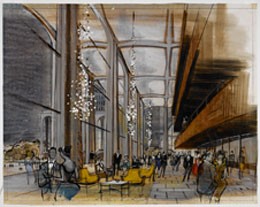 Image: Harrison & Abramovitz, architects. H. Blake-Smith, artist. Philharmonic Hall, Lincoln Center, New York,: View of lobby and cafe, 1961
Image: Harrison & Abramovitz, architects. H. Blake-Smith, artist. Philharmonic Hall, Lincoln Center, New York,: View of lobby and cafe, 1961
An Evening at Avery Library
in celebration of our 125th anniversary year
Friday May 13, 2016
Curators: Janet Parks, Teresa Harris, Roberto Ferrari, Chris Sala
Display: 4:00 - 8:30 pm
Reception: 5:30 - 8:30 pm
Remarks: 6:30 pm
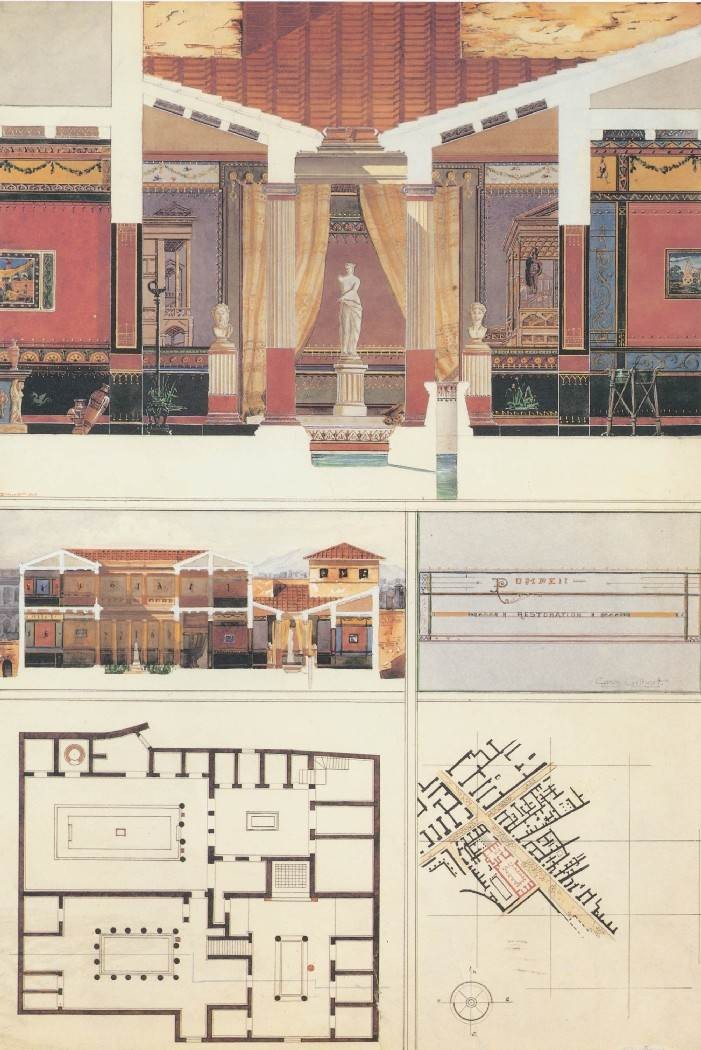
Highlights from the Permanent Collections:
An exhibit celebrating Avery’s 125th anniversary year
November 2nd 2015
Exhibit 3:00 – 9:00 pm
Reception 5:30 – 8:30 pm
Join us for this one night only opportunity to view 125 extraordinary works curated from Avery's remarkable collections. Spanning seven centuries from Alberti, Serlio & Piranesi to Le Corbusier and Wright, a tour de force presentation of publications and drawings from our art, rare books, drawings and archival collections.
Avery Library History
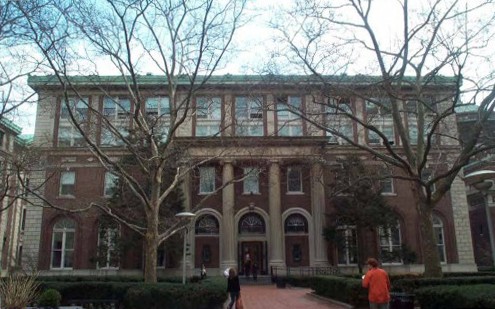
The Avery Library was founded in 1890 by Samuel Putnam Avery and his wife Mary Ogden Avery as a memorial to their son Henry Ogden Avery.
The letter of conveyence from S.P.Avery and Mary Ogden Avery to Seth Low, President, Columbia College articulates their wish “to donate the library comprising all volumes relating to architecture and the decorative arts and other professional books, owned by the late Henry Ogden Avery” as well as “sums which may be required to pay for books purchased” and “a permanent fund”. It was also their wish “that the books... be kept together ... and that they be kept as a library of reference only, and not allowed to leave the library building.” The conditions of the endowment were accepted by the Board of Trustees on Oct. 6, 1890. It was the purpose of the library to collect materials from which architects might find inspiration for their work.
In 1897, when Columbia moved to Morningside Heights from 49th St., the Avery Library was installed in its own rooms in Low Library where it remained until 1912 when, through the generosity of Samuel Putnam Avery, Jr. the current Avery Library was constructed to honor his parents and younger brother. Achitects Charles Follen McKim and William Mitchell Kendall of the firm of McKim, Mead and White designed and oversaw construction of the new Avery Library.
Over the ensuing decades Avery's collections grew as did the physical footprint of the building. The 1970s underground extension designed by Professor Kouzmanoff housed the Avery Library collection, the Ware Collection (personal library of Professor William Robert Ware), and the fine arts collection (formerly housed in the Department of Art History and Archaeology).
Within the walls of Avery Library may be found six centuries of an unrivaled printed record of architectural thinking. Early Renaissance books include the first printed architectural book, Alberti’s De Re Aedificatoria (1485); the first printed Vitruvius, De Architettura (1486); and the first printed book to contain architectural illustrations, Francesco Colonna’s Hypnerotomachia Poliphili (1499). There are also first editions of Vignola, Palladio, and Serlio as well as Serlio's manuscript for the unpublished sixth volume of his Tutte l'opere d'architettura et prospetiva . In addition, Avery owns one of six copies known to exist of the first architectural book published in the English language, John Shute’s The First and Chief Groundes of Architecture (1563). Avery Library had owned all but one of the so-called American architectural incunabula which were books published before 1800. Herbert Mitchell, former rare-book librarian, found the missing one, our copy of Abraham Swan’s A Collection of Designs in Architecture, containing new plans and elevations of houses, for general use... printed by Bell in Philadelphia between June and Nov. 1775. It was the second book on architecture to be published in the Thirteen Colonies and by far the rarest being one of only two copies known to exist. It’s first owner was Richard Smith (1735-1803), a Philadelphia lawyer and delegate to the First Continental Congress who inscribed the title page on Nov. 15, 1775 dedicating it to John Hancock, President of the Continental Congress. We also own the first architectural book published in the United States entitled The British Architect printed by Bell in Philadelphia in June 1775.
The collection of architectural drawings and archives number more than 2 million, and include significant holdings of works by Richard Upjohn, A.J. Davis, Louis Sullivan, Hugh Ferriss, Philip Johnson, Felix Candela, Ely Jacques Kahn, William Lescaze, Greene & Greene, among many other 19th through 21st century primarily American architects. The largest and most significant holding is the Frank Lloyd Wright Foundation Archives. Acquired in 2012, it is the most comprehensive archive of an American architect including drawings, correspondence, films, photographs and related archival materials. Collections of architectural photography are also significant including among others: the Empire State Building photographs by Lewis Hine, and works by Joseph Molitor, Samuel Gottscho, George Cserna, and Charles Platt.
One of Avery Library’s strengths is in the periodical literature of architecture.The collections include complete runs of important periodicals of the 19th and 20th centuries including the and American Architect and Building News, Architectural Sketchbook (Boston), The Brickbuilder, Le Revue Generale de l’architecture et des travaux publique, Casabella, Oppositions, Pencil Points, Gatepac, L’Esprit Nouveau, Wendingen and De Stijl and a growing collection of pre-war avante-garde European journals. The Avery Index to Architectural Periodicals, first compiled and published in 1963, offers a comprehensive listing of journal articles published worldwide on architecture and design, archaeology, city planning, interior design, landscape architecture, and historic preservation, with coverage from the 1930s (with selective coverage dating back to the 1740s) to the present.
Avery Family
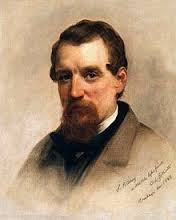 Samuel Putnam Avery, Sr. Wikimedia Commons
Samuel Putnam Avery, Sr. Wikimedia Commons
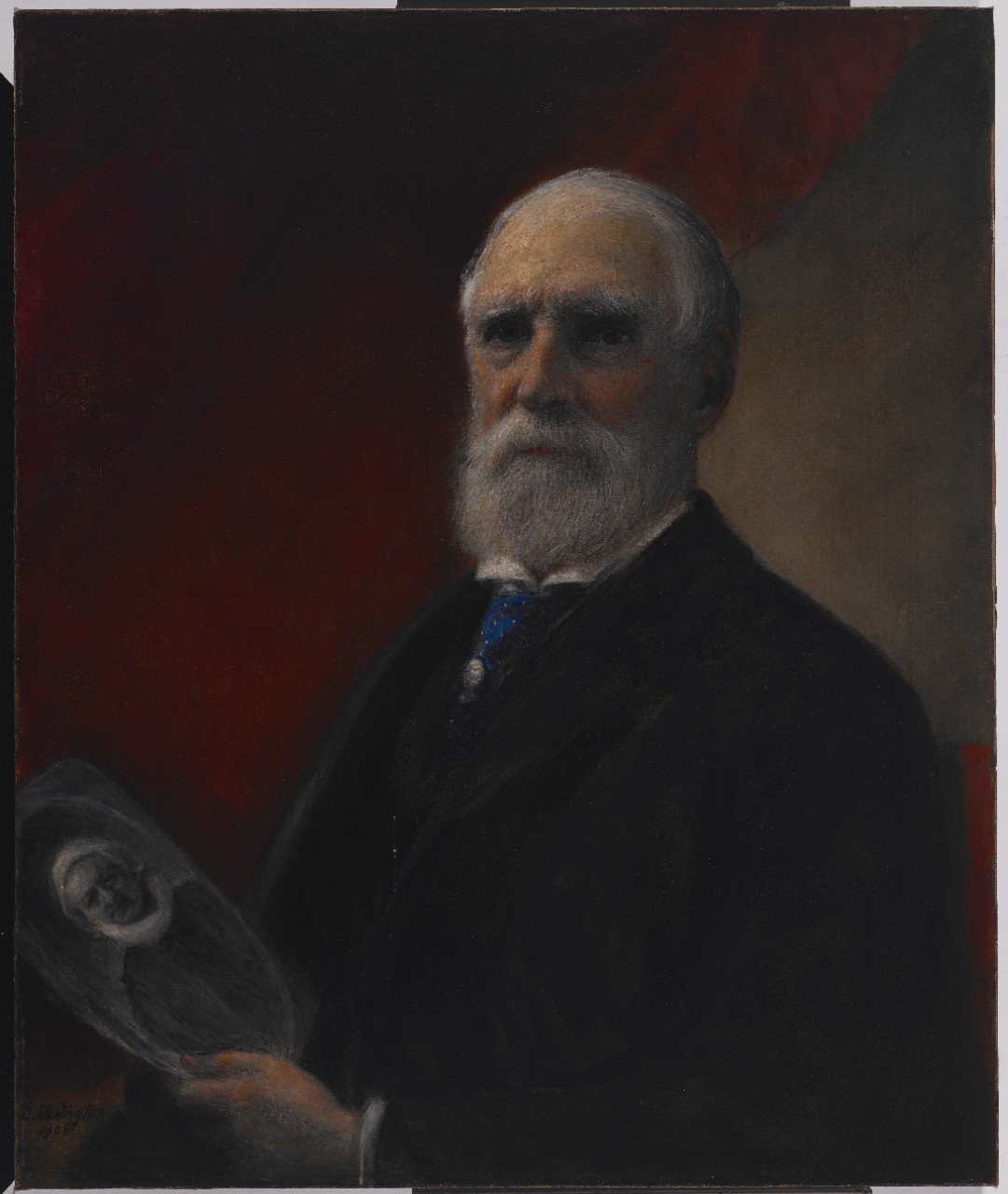 Daniel Huntington (1816-1906) Portrait of Samuel Putnam Avery, Sr. (1822-1904) 1906, oil on canvas, 30 x 25 in. Gift of Robert W. Macbeth, 1918 (C00.242) Art Properties, Avery Architectural & Fine Arts Library, Columbia University in the City of New York
Daniel Huntington (1816-1906) Portrait of Samuel Putnam Avery, Sr. (1822-1904) 1906, oil on canvas, 30 x 25 in. Gift of Robert W. Macbeth, 1918 (C00.242) Art Properties, Avery Architectural & Fine Arts Library, Columbia University in the City of New York
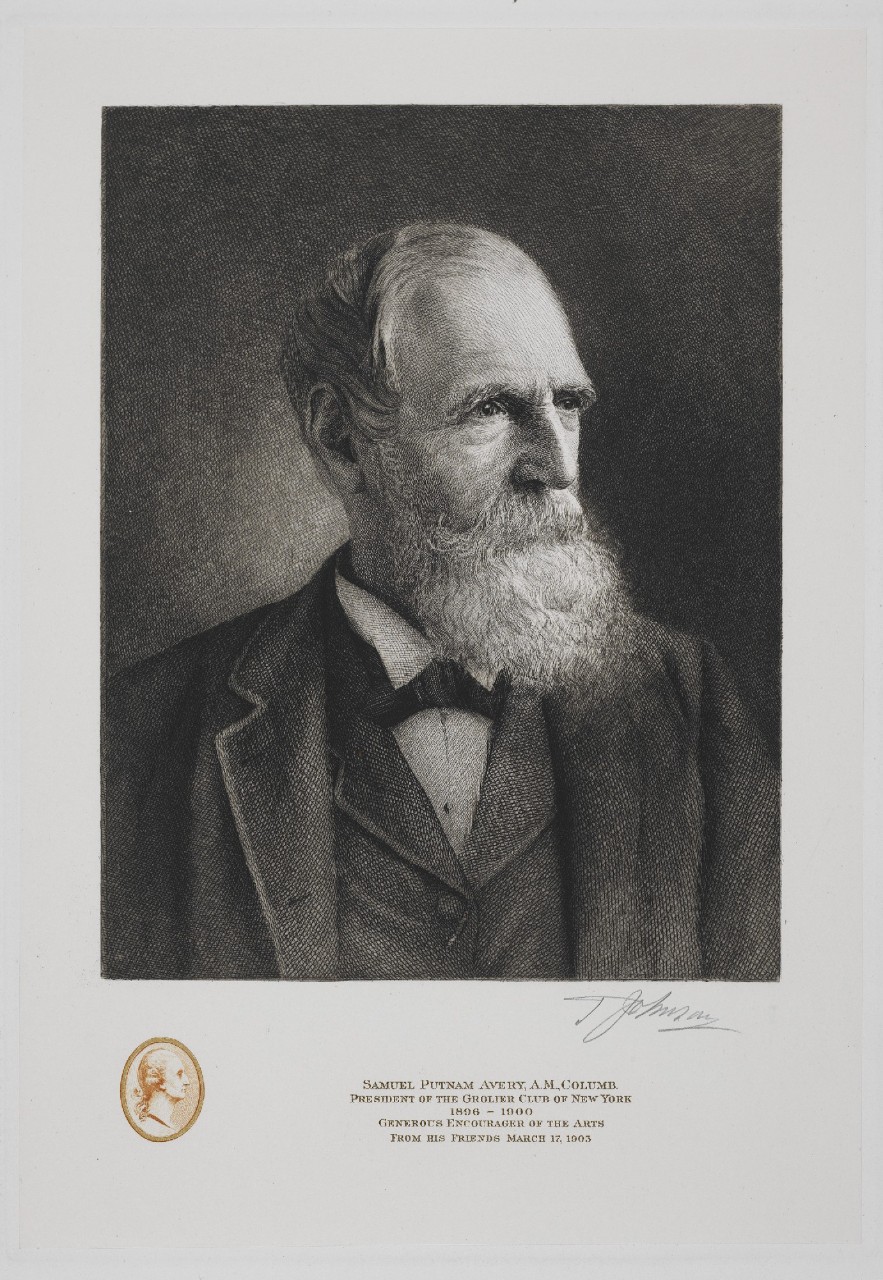 Samuel Putnam Avery, Sr. engraving, Art Properties, Avery Architectural & Fine Arts Library, Columbia University in the City of New York
Samuel Putnam Avery, Sr. engraving, Art Properties, Avery Architectural & Fine Arts Library, Columbia University in the City of New York
SAMUEL PUTNAM AVERY, Sr.
Samuel Putnam Avery, Sr. was born March 17, 1822 in New York City. By 1840, he and his brother Benjamin Parke were apprenticed to learn engraving on copper and were both employed by the American Bank Note Company. He also became a skilled wood engraver and illustrated numerous newspapers and books. In 1844 he moved his office to 102 Nassau St. and in the same year, married Mary Ann Ogden on Sunday Nov. 24, 1844.
S.P. Avery was named Commissioner of the Fine Arts Division for the Paris Exposition of 1867. He supervised the assembling of the American collection of 87 paintings, 7 sculptures and medals and 28 engravings and etchings. 45 artists were included. Avery returned to NYC with materials to furnish a new gallery. He established his home and business at 86-88 Fifth Ave. at 14th St. In the course of a dozen auctions held between 1864 and 1889, he sold more than 1,500 paintings to almost 400 people. Samuel Putnam Avery, Sr. retired from business in 1889, but his gallery continued under the leadership of his son Samuel Putnam Avery, Jr.
The legacy of Samuel Putnam Avery who died on Aug. 11, 1904 and Mary Ogden Avery who died in 1911 lives on in the many institutions they helped to found. The Avery Architectural and Fine Arts Library has a great deal of archival material relating to the family and the founding of the library.
BIBLIOGRAPHY
1. Henry Ogden Avery, “The Paris School of Fine Arts” Scribners Magazine 2, no.4 (Oct. 1887):387-403.
2. Samuel Putnam Avery, The Diaries, 1871-1882, of Samuel P. Avery, Art Dealer. Ed. from the manuscript by Madeleine F. Beaufort, Herbert L. Kleinfield, and Jeanne K. Welcher. (New York, Arno Press, 1979).
3. Ruth Sieben-Morgan, Correspondence in Connection with Samuel Putnam Avery (1822-1904), Engraver on Wood. (1 portfolio. m.s., 1938-40).
4. Russell Sturgis, “Samuel Putnam Avery” The Columbia University Quarterly, 6 (Dec. 1904):14-23.
5. Encyclopaedia Britannica. Britannica Academic. "Samuel Putnam Avery"
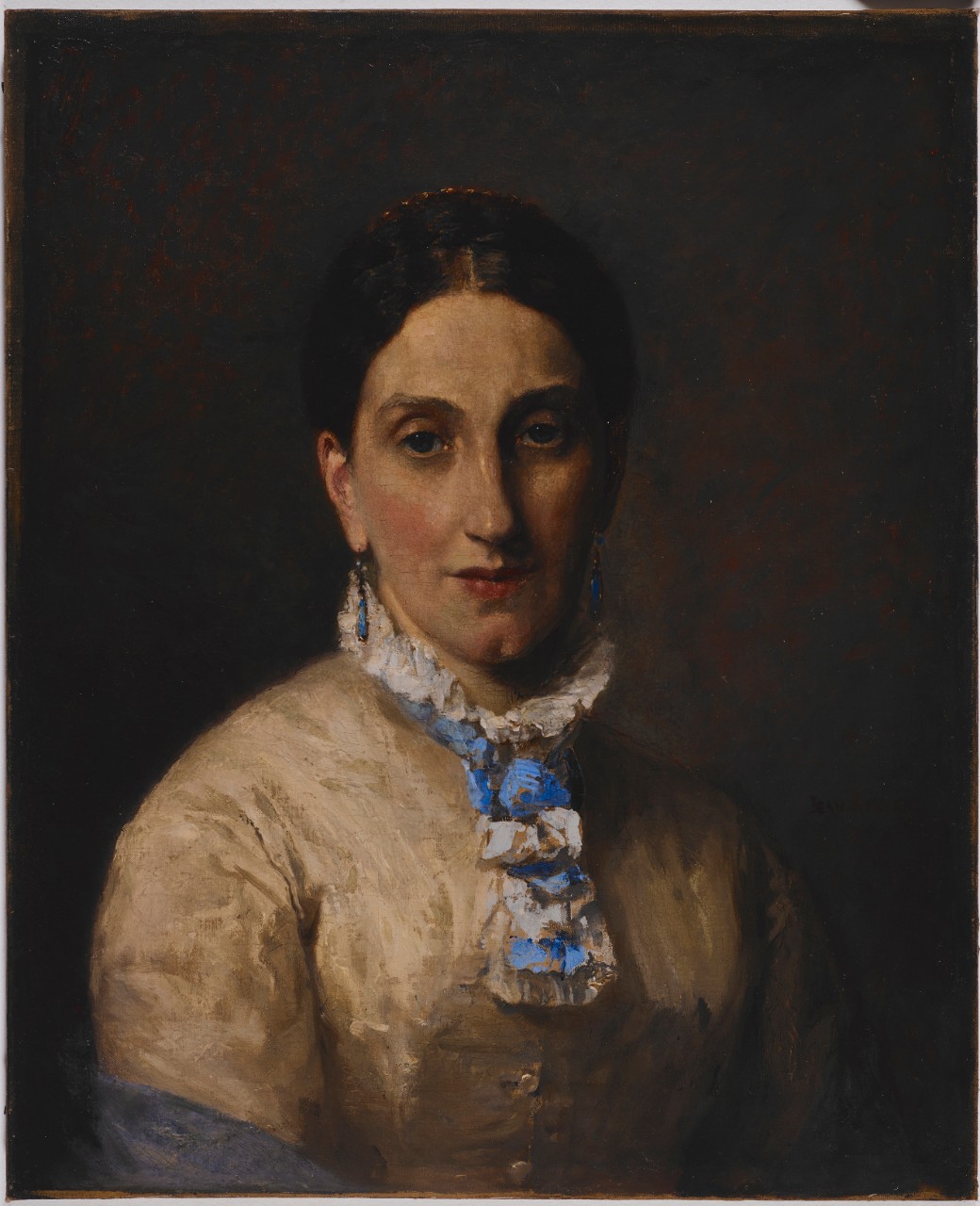 Jean-Ernest Aubert (1824-1906) Portrait of Mary Ann Ogden Avery (1825-1911) Undated, oil on canvas, 24 1/4 x 19 3/4 in. (2006.2.3) Art Properties, Avery Architectural & Fine Arts Library, Columbia University in the City of New York
Jean-Ernest Aubert (1824-1906) Portrait of Mary Ann Ogden Avery (1825-1911) Undated, oil on canvas, 24 1/4 x 19 3/4 in. (2006.2.3) Art Properties, Avery Architectural & Fine Arts Library, Columbia University in the City of New York
MARY OGDEN AVERY
Mary Ogden Avery was born in New York in 1825. She married Samuel Putnam Avery in 1844 and was much interested in philanthropy. With her husband she gave and endowed Avery Library to Columbia University.
She died of pneumonia after a short illness in Hartford, CT on April 29, 1911 at the home of her son, Samuel Putnam Avery, Jr. where she had moved two years prior to her death.
excerpted from: American Art News obituary, Vol. 9, No. 30 (May 6, 1911), p. 4; New York Times obituary, April 30, 1911
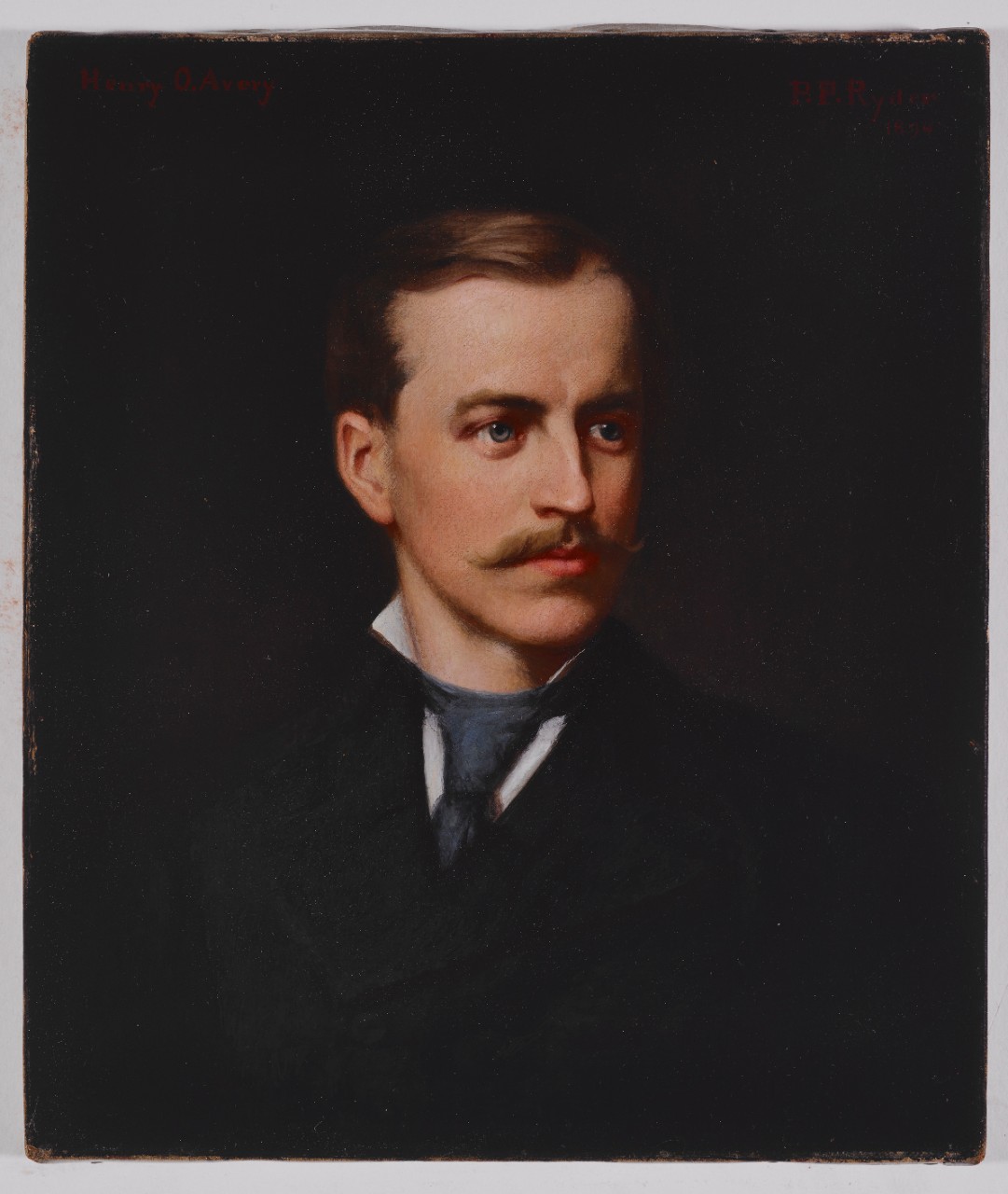 Platt Powell Ryder (1821-1896) Portrait of Henry Ogden Avery (1852-1890) 1894, oil on canvas, 14 1/4 x 12 in. Gift of Emma Avery and Amy Ogden Welcher (C00.1111) Art Properties, Avery Architectural & Fine Arts Library, Columbia University in the City of New York
Platt Powell Ryder (1821-1896) Portrait of Henry Ogden Avery (1852-1890) 1894, oil on canvas, 14 1/4 x 12 in. Gift of Emma Avery and Amy Ogden Welcher (C00.1111) Art Properties, Avery Architectural & Fine Arts Library, Columbia University in the City of New York
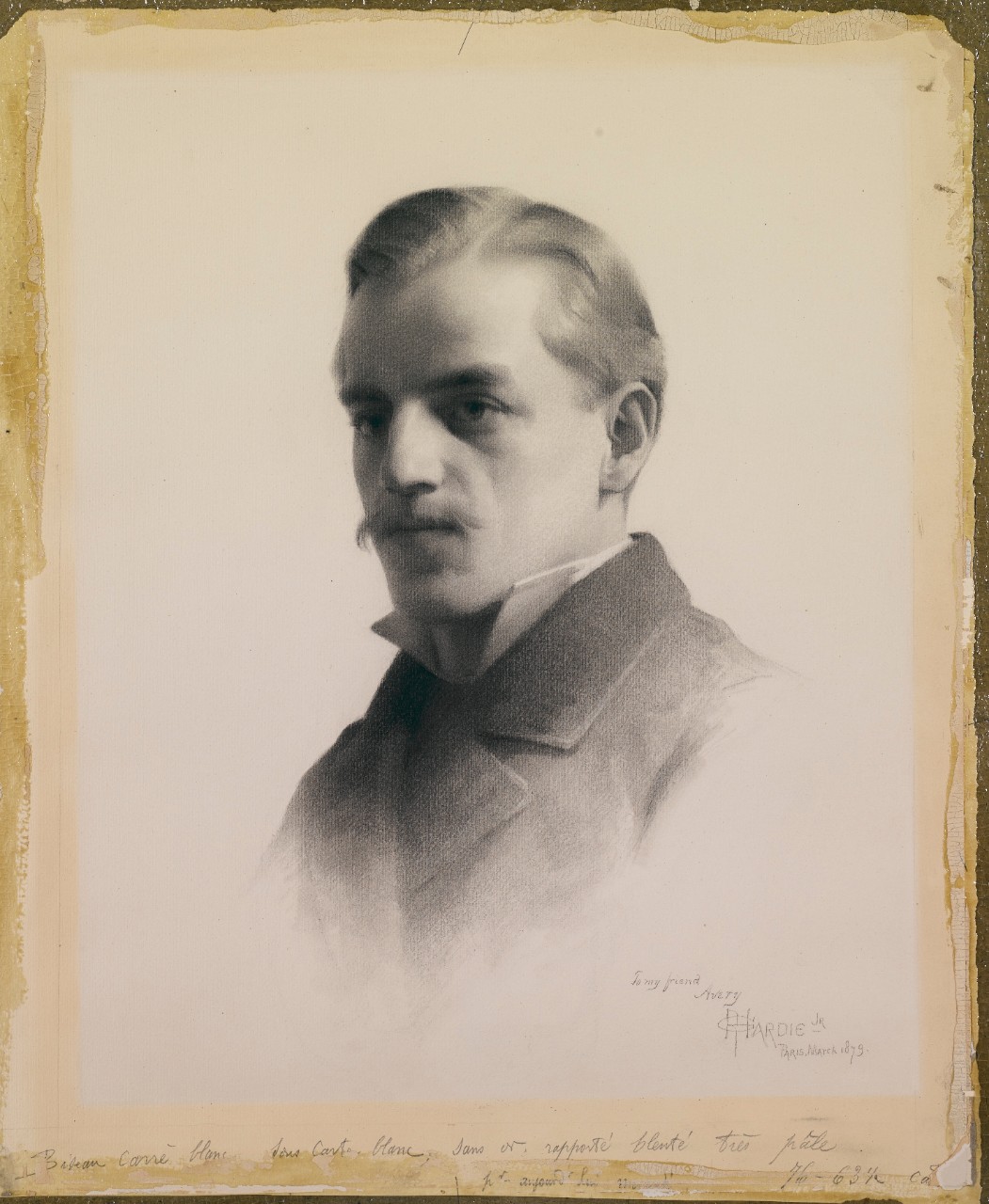 Robert Gordon Hardie, Jr. (1854-1904) Portrait of Henry Ogden Avery (1852-1890) 1879, charcoal on paper, 21 3/4 x 17 5/8 in. (C00.1560) Art Properties, Avery Architectural & Fine Arts Library, Columbia University in the City of New York
Robert Gordon Hardie, Jr. (1854-1904) Portrait of Henry Ogden Avery (1852-1890) 1879, charcoal on paper, 21 3/4 x 17 5/8 in. (C00.1560) Art Properties, Avery Architectural & Fine Arts Library, Columbia University in the City of New York
HENRY OGDEN AVERY
Born Jan. 31, 1852, Henry Ogden Avery completed courses at Cooper-Union Art School and was a student in the offices of S.P.Avery’s friend Russell Sturgis in 1870. Sturgis urged S.P. Avery to send Henry to the Ecole des Beaux Arts in Paris where Henry studied from 1872-1879. After his return to NYC he worked for a time in the office of Richard M. Hunt and from 1883 to his death in 1890 he was an independent architect. He was a founding member of the Architectural League of NY, the Archaeological Institute of America and the New York Society of Architects. He competed for the design of Grant’s Tomb in NYC and for a pedestal for the Statue of Liberty. His death was much lamented throughout the city - there is a memorial from the Architectural League, a plaque, and a bust at Avery Library.
Clippings in an album at the Avery Library at Columbia University in New York indicate that he was studying appropriate ceiling heights and lighting for art galleries at the time of his death.
It was his death on April 30, 1890 at age 39, that prompted Samuel Putnam and Mary Ogden Avery to found the Avery Memorial Library in 1890.
excerpted from: Avery Memorial Architectural Library by James Grote Van Derpool. Columbia University Press, New York, 1954; New-York Tribune obituary, June 2, 1890, p.7
 Samuel Putnam Avery, Jr. Wikimedia Commons
Samuel Putnam Avery, Jr. Wikimedia Commons
SAMUEL PUTNAM AVERY, Jr.
Samuel P. Avery, Jr. 1847-1920, was in his early 40s when his father retired at the end of the 1880s. Sam Jr. worked in the business for over 30 years, and continued to use the gallery name. With the help of an important backer, Charles Stewart Smith, Sam Jr. moved into new quarters on 5th Avenue and 36th Street. This was about a mile uptown from the area around 14th Street where most galleries had been located in the 1860s and 70s. Avery and Roland Knoedler were among the first art dealers in this new neighbourhood.
Avery's gallery, at 368 Fifth Avenue, was built according the plans of his architect-brother Henry, and had several distinctive and novel features. Although it was but a modest two-story structure of Scottish redstone and Baltimore brick, it housed not only Avery Jr.'s own business, but also the Fifth Avenue Art Galleries auction house. For a short time, Henry Ogden Avery's architectural office was there as well. The lot on which the building stood was quite large, with a 35-foot front on Fifth Avenue and a return of 86 feet on 35th Street. Avery's galleries occupied the second floor, and were described in a promotional brochure as the largest local art gallery, with 500 feet of line and 5,000 feet of floor space, which Avery used for a series of one-man shows.
He donated the funds to construct the current Avery Hall, designed by the legendary architecture firm McKim, Mead, and White, to house the Avery Architectural & Fine Arts Library.
excerpted from: "The American art trade and French painting at the end of the 19th century" by Madeleine Fidell-Beaufort in Van Gogh Museum Journal, 2000, p.104